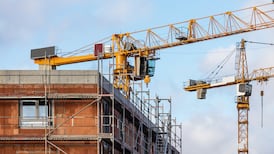The Irish economy registered very strong growth in the opening quarter of 2001, with gross domestic product (GDP) rising by 13 per cent. However, the pace of activity has lost considerable momentum. GDP slowed significantly between the first and second quarters of the year as the strong carry-over effect from the large rise in GDP in 2000 abated.
Activity has slowed considerably since mid-year. Manufacturing output turned down sharply in the third quarter, declining on a quarter-on-quarter basis by a whopping 7.1 per cent. The downturn has been particularly severe in the high-tech industries, where we estimate the growth rate has slowed to 6 per cent year-on-year in the third quarter, down from more than 40 per cent in the early part of the year.
Not surprisingly, export growth is rapidly losing momentum. By the third quarter of 2001, we estimate that export growth has slowed to less than 8 per cent year-on-year from 22 per cent in the first quarter. Meanwhile, external trade figures with non-EU countries for October show export volumes running well down on year earlier levels. It seems likely that the fourth quarter will show a decline in exports from year earlier levels, a marked turnaround from the 22 per cent rise in the opening quarter of the year.
The slowdown is also gathering momentum in the consumer sector. The weakness of new car sales, down 29 per cent year to date, has severely depressed the overall level of retail sales.
Other retail sales volumes fell by 0.8 per cent in the third quarter compared to the previous quarter, the first such decline since 1996. Spending has been hit by a fall-off in tourist numbers, reflecting the impact of foot-and-mouth disease, as well as the weaker economy.
Further clear evidence that the slowdown in activity is broad based, pronounced and gaining momentum is provided by the monthly Exchequer returns. Tax receipts grew by 5.3 per cent year-on-year in the first half of 2001 before declining by 2.5 per cent year-on-year in the July to November period. Tax receipts are now likely to rise by 2.5 per cent in 2001 compared to 15 per cent in 1999 and 2000.
In the construction sector, house-building activity has been weak throughout 2001. In the year to November, HomeBond registrations, a good proxy for housing starts, fell by 18 per cent year-on-year. It is estimated that there will be an 11 per cent decline in private sector house building this year.
Meanwhile, growth in overall construction output is forecast to slow to 1 per cent in 2001 from 7 per cent last year. There has been a noticeable weakening in employment growth in the sector since mid-year.
The number employed in construction showed a rise of just 0.8 per cent year-on-year in September compared to 4 per cent in June.
Not surprisingly, given the downturn in economic activity, the Quarterly National Household Survey for June-August 2001, shows a reversal in the downward trend in unemployment. There was an increase of 1,800 in the number unemployed in the June-August quarter, compared to the same period last year. By contrast, the number unemployed fell by 9,500 in the year to March-May 2001. The unemployment rate picked up to 4.3 per cent in the third quarter from 3.7 per cent in the second quarter.
More worryingly, the Live Register has risen sharply in the past two months, climbing by 12,700 in October and November, pointing to heavy job losses in the final quarter of this year.
GDP growth is likely to slow to zero or even turn negative in the current quarter. Nevertheless, because of the strong growth performance in the opening half of the year, GDP growth for 2001 as a whole is likely to be of the order of 7 per cent.
The economy, however, will enter 2002 with very little momentum. Zero or negative growth is likely to persist in the opening quarter of next year. House building, business investment, manufacturing and tourism all seem set for a difficult first half to 2002.
However, there are areas of residual strength in the economy. Consumer spending should grow by around 4 per cent in 2002, given the continuing strong rise in disposable incomes. Government spending will also rise sharply next year. Exports should begin to pick up later in the year if the world economy turns upwards as expected by mid-2002.
Even allowing for these positive factors, GDP growth is likely to average no more than 3.75 per cent in 2002 given the weak start to the year. A lower growth rate is certainly plausible if the weakness in activity evident since mid-2001 persists for most of next year.
The likelihood, however, is that expansionary fiscal policies and, in particular, very low interest rates will lead to a rebound in activity over the course of 2002, both at home and abroad. It will be late 2002, however, before the Irish economy is back operating at full tilt.
Oliver Mangan is chief bond economist, AIB Group Treasury











